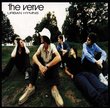| All Artists: Marin Marais, Juan Manuel Quintana, Dolores Costoyas, Attilio Cremonesi Title: Suites for Viola Da Gamba Members Wishing: 0 Total Copies: 0 Label: Harmonia Mundi Fr. Release Date: 1/11/2000 Album Type: Import Genre: Classical Styles: Chamber Music, Historical Periods, Baroque (c.1600-1750), Classical (c.1770-1830) Number of Discs: 1 SwapaCD Credits: 1 UPC: 794881479429 |
Search - Marin Marais, Juan Manuel Quintana, Dolores Costoyas :: Suites for Viola Da Gamba
 | Marin Marais, Juan Manuel Quintana, Dolores Costoyas Suites for Viola Da Gamba Genre: Classical |
Larger Image |
CD DetailsSimilarly Requested CDs
|
CD ReviewsMusic of an early 17th c. French genius brought to life 01/20/2002 (5 out of 5 stars) "Marin Marais was a contemporary of Jean Baptiste Lully and played the viol da gamba for Lully in the opera and court orchestra's of the Sun King. He was a student of the gamba master St. Colombe and a rather romanticized account of this relationship can be seen on the video "Tu le Matin du Monde." The instrument which he played, the viole de gamba, belongs to the same family of instruments as the double string bass, only it is small enough to be held between the legs and it has gut frets. Some gamba's have simpathetic strings though it sounds like Mr. Quintana's gamba for this disc doesn't. The playing is still marvelous though. Mr. Quintana is from Argentina and studied in Switzerland. He is accompanied on this disc by Dolores Costoyas on theorbo (a type of long-necked lute) and Attilio Cremonesi playing the clavecin (the generic term for a small keyboard instrument, like a harpsichord.) The gamba is an intimate sounding instrument so you may have to turn the volume up a bit to hear all the nuances that this ensemble packs into this disc. The clavecin is very much in the background but the theorbo playing at times takes some of the lime-light, as in track 18, the Rondeau from the suite in a minor. This number in particular has a very jazzy feel to it. Although the playing is very affected throughout the disc remains relaxed and not heavy handed or stuffy. Mr. Quintana's ornamentation is both studied and spontaneous. He makes good use of the bow in places to produce a vibrato effect that cannot be had on the gambe naturally because of the frets. While I will not say that the playing is perfect to our technologically tainted ears, what is perfection to a music that historically always had some improvisation to it? Track 8 ,another bouncy Rondeau, makes up for this. This is a good disc for someone wanting to explore the other masters of the 17th and 18th century as well as for the collector."
|








![Across The Universe [Deluxe Edition]](https://nationalbookswap.com/cd//m/51/1251/1241251.jpg)

